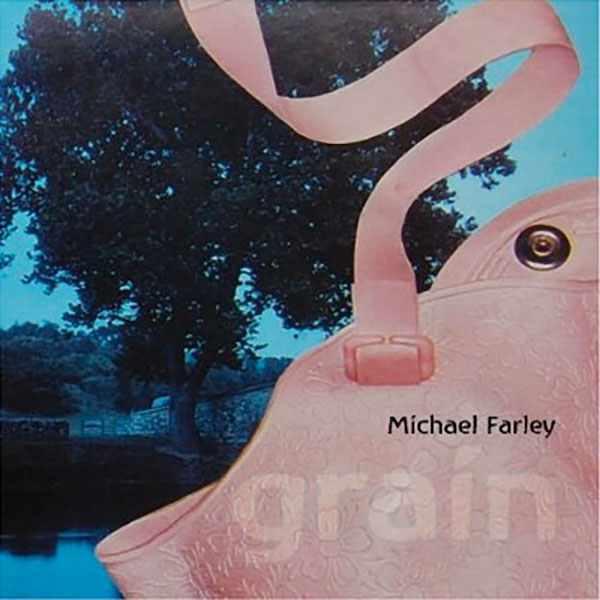
by Ian Mann
October 04, 2009
/ ALBUM
An uncompromising and highly personal multi media album
This final release of an initial batch of albums sent to us by the St. Paul, Minnesota based Innova label is the strangest of an eclectic bunch. Michael Farley is a teacher, composer and ethnomusicologist in addition to being co-chair of the music department of St Lawrence University, Canton,New York. He was leader of the 70’s group Patchwork and still plays r’n'b with the Radio Bob Band besides undertaking more experimental projects such as “The Garden;a soundscape for percussionist and tape” (1989), “Taking In The Towers” a multimedia oratorio concerning the Watts Towers in Los Angeles and “Crosstalk” a collaboration with rap artist Ohene Cornelius.
“Grain” however is dedicated to the experimental side of Farley’s music making. Not that jazz is completely out of the equation. Farley’s tenor sax can be heard on two of the tracks and the opening “No Eyes” is inspired by the music and character of Lester Young. “Camellia” acknowledges the influence of Thelonious Monk and Bill Evans. Elsewhere we hear a slab of “musique concrete” and both “No Eyes” and “Brown’s Hymn” integrate music and poetry with Farley himself handling the spoken word vocals. This is uncompromising music that is likely to have limited appeal but it is not without merit.
“No Eyes” is a homage to the great saxophonist Lester Young (Pres) and is based on the poems found in David Meltzer’s book of the same name. Meltzer describes his work as a “prolonged meditation on the last year of Lester Young’s life”. Farley’s hipster voice wraps itself around his own tenor (a Selmer Mark IV) with incidental bursts of percussion coming from Timothy Hill. Guitarist Richard Stephan also features. The words investigate the vicissitudes of the “jazz life”, not always painting a rosy picture of what were very difficult times. Other jazz legends are mentioned, among them Freddie Green, Count Basie and Jo Jones. There are some great lines here and it’s unfortunate that the words are not reproduced in the album brochure, it would certainly enhance the listener’s enjoyment of the piece. I suspect that as is so often the case this may be due to copyright reasons. As it is, without having the words to follow the piece is overly long and I can’t see it being the kind of thing I’ll be returning to that often.
“...after Motherwell” takes it’s inspiration from the paintings of Robert Motherwell, specifically his 1965 series of miniatures “The Lyric Suite” parts of which are reproduced on the sleeve. I was disappointed to discover that the Scottish steel town wasn’t the inspiration but I digress. Motherwell used to listen to the avant garde composer Alban Berg when he was painting and Farley has partly written in this style musing on the intriguing fact that he is responding third hand to Motherwell’s secondary influence. The sound is of “musique concrete” manipulated on 2 channel tape, it’s the kind of thing beloved by the more extreme readers of “Wire” magazine. Periods of silence punctuate the piece with each fragment of electronic sound representing one of Motherwell’s miniatures. Once more interesting stuff but again not something that lends itself to repeated listenings.
The piece morphs into “Camellia” a piano piece played by Farley’s wife Barbara Phillips-Farley. Monk and Evans are mentioned as influences here as is one William Hibbard who appears to have been some kind of guiding figure with regard to the piece. The mood is generally reflective, almost funereal with an electronically generated “chord cloud” cloaking the piano. Phillips-Farley’s playing is measured and delicate, glacial at times almost lyrical at others. It’s not exactly an easy listen but nevertheless this is the most conventional and thereby most accessible piece on the record. I can imagine hearing this on “Late Junction.”
“Brown’s Hymn” is another jazz/spoken word piece with voice punctuated by saxophone. There is a narrative here, possibly a piece Farley’s life story in which the Reverend Frederic Douglas Brown of the title plays an important part. Farley’s words muse on life and death, the trials of the touring musician and the nature of the blues. Jim Robinson provides the voice of Rev. Brown and as the piece unfolds layers of voices combine with Farley’s expressive saxophone. Again a printed version of the words would have been useful. This is dramatic and effective stuff but again not the kind of thing to return to on a regular basis.
“Grain” is a multi media project and the disc includes an eight minute plus video that unfortunately I was unable to access. Entitled “Milton Avery In Kansas” as far as I can deduce from the liner notes this is a short film shot by Farley of the wave like motion of wheat in the vast Kansas cornfields. The inspiration is partly drawn from the paintings of Milton Avery and the soundtrack includes electronically generated wind sounds. The piece was facilitated by a grant from Farley’s university and he also acknowledges the Kansas Wheat Commission and the Kansas Wheat Growers Association in his notes. I’d like to have seen this(especially as it gives the album it’s title) it sounds intriguing but domestic technological issues dictated otherwise.
“Grain” is an uncompromising and highly personal album. It’s interesting conceptually but ultimately it’s too oblique to hold any kind of mass appeal, even the most adventurous listeners may find much of this something of a challenge.
blog comments powered by Disqus